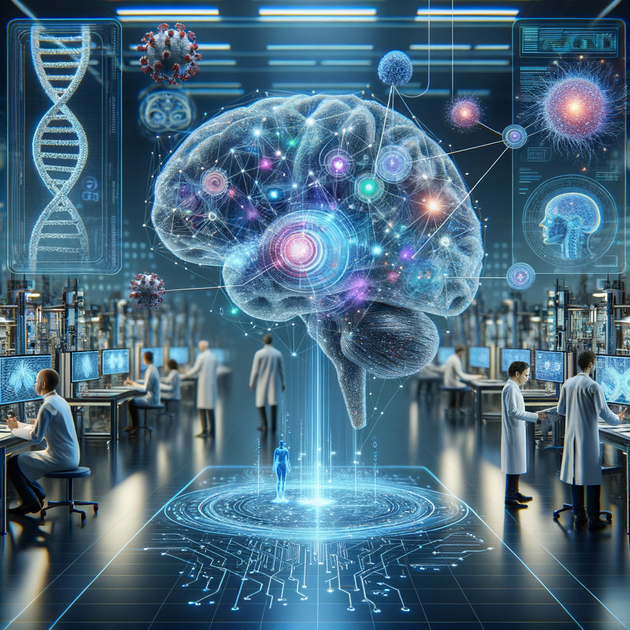Cracking the Cerebral Code: How AI is Mapping the Human Brain
Imagine, for a moment, holding the most powerful and intricate puzzle in existence—the human brain. With about 80 billion neurons intricately connected, mapping these connections is a task that seems almost insurmountable. Yet, scientists at Argonne National Laboratory are doggedly determined to tackle it, leveraging advanced AI technologies to decipher the brain’s vast connectivity network.
The Ambitious Project at Argonne

Thomas Uram, Data Science and Workflows Team Lead
Credit: Argonne National Laboratory
Argonne’s project is spearheaded by Nicola Ferrier, a Senior Computer Scientist in the Mathematics and Computer Science Division, with the invaluable contributions of Thomas Uram, a Computer Scientist in the Argonne Leadership Computing Facility. Together, they aim to uncover the intricate web of neuron connections and gain insights into human behavior and neurological diseases.
Connectomics: The Study of Brain Connections
Connectomics involves mapping the connections within an organism’s nervous system. Uram and his colleagues focus on understanding brain tissue samples that span just a cubic millimeter. Considering the complexity involved, this small scale is essential for managing the enormity of the task.
A Slice of the Brain
The journey of mapping begins by slicing residual human brain tissues—obtained during surgeries—into thousands of thin, 30-nanometer sections. Each section is mounted on a tape and imaged using an electron microscope.

Fun Fact: The term “neuron” was coined by Santiago Ramón y Cajal, who is often regarded as the father of modern neuroscience.
Each image is meticulously assembled, and the sections are aligned to match corresponding features. Neural networks, particularly the Flood-Filling Network (FFN) developed by Google, are used to identify and trace neurons within these images.
Flood-Filling Networks: A Specialized Approach
Flood-Filling Networks (FFNs) are specialized convolutional neural networks (CNNs) designed for neuron segmentation in connectomics. These neural networks differentiate neurons from other objects in electron microscopy images.
FFNs are akin to regular CNNs used in image-related tasks such as object detection, caption generation, or even new image creation. However, they are specifically tuned to identify the numerous neurons within a dense tissue volume.
The Challenge of Data
Even a cubic millimeter of brain tissue generates massive amounts of data—around two petabytes. Uram explained that segmenting this data using the full capacity of the Aurora supercomputer could take several days. Scaling up to larger volumes, like a whole mouse brain or a human brain, poses exponential increases in data and computational requirements.
Did You Know? A human brain is about 1,000 times larger than a mouse brain. Mapping it would require immense computational power significantly beyond our current capabilities.
Tackling Future Challenges
It’s clear that our current technology is not yet capable of handling the monumental task of fully mapping a human brain. Uram mentioned that we would need to create more powerful machines and see significant advancements in the tech we use for segmentation.
Moreover, existing models like ChatGPT exhibit errors similar to those encountered in neuron segmentation, necessitating extensive human proofreading. Additionally, the storage problems at petabyte and exabyte scales will need innovative solutions to manage such vast amounts of data effectively.
The Road Ahead
While the path to completely mapping a human brain is fraught with challenges, the foundational work done by Uram and his colleagues offers hope for the future. The solutions likely lie in advancing AI technologies and computational efficiencies rather than merely scaling up existing systems.
Uram’s dedication to understanding these fundamental questions provides a glimmer of optimism. “How the brain works is a complex and vexing question. It’s a great unknown,” he mused, signifying just how much there’s yet to uncover.
Join the Conversation
What do you think the future holds for AI and brain mapping? Share your thoughts in the comments below and let’s discuss how these advances could revolutionize our understanding of the human brain.
